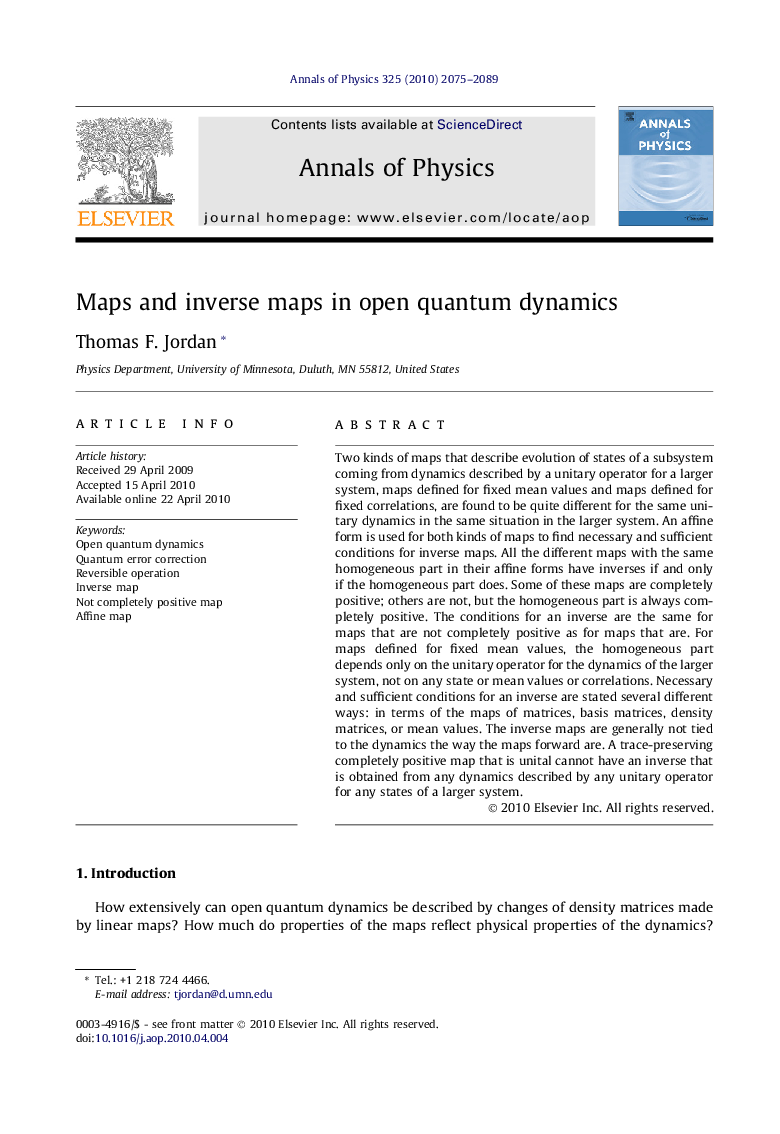| Article ID | Journal | Published Year | Pages | File Type |
|---|---|---|---|---|
| 1857541 | Annals of Physics | 2010 | 15 Pages |
Abstract
Two kinds of maps that describe evolution of states of a subsystem coming from dynamics described by a unitary operator for a larger system, maps defined for fixed mean values and maps defined for fixed correlations, are found to be quite different for the same unitary dynamics in the same situation in the larger system. An affine form is used for both kinds of maps to find necessary and sufficient conditions for inverse maps. All the different maps with the same homogeneous part in their affine forms have inverses if and only if the homogeneous part does. Some of these maps are completely positive; others are not, but the homogeneous part is always completely positive. The conditions for an inverse are the same for maps that are not completely positive as for maps that are. For maps defined for fixed mean values, the homogeneous part depends only on the unitary operator for the dynamics of the larger system, not on any state or mean values or correlations. Necessary and sufficient conditions for an inverse are stated several different ways: in terms of the maps of matrices, basis matrices, density matrices, or mean values. The inverse maps are generally not tied to the dynamics the way the maps forward are. A trace-preserving completely positive map that is unital cannot have an inverse that is obtained from any dynamics described by any unitary operator for any states of a larger system.
Related Topics
Physical Sciences and Engineering
Physics and Astronomy
Physics and Astronomy (General)
Authors
Thomas F. Jordan,
